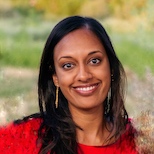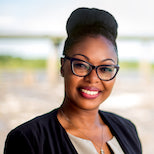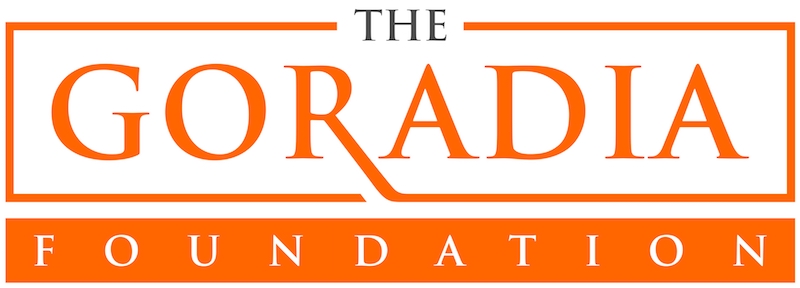
Sapphira Goradia

Courtney Rice
Special to the Philanthropy Journal
By Sapphira Goradia, Executive Director of the Goradia Foundation, and Courtney Rice, Director of Inclusion and Community Impact at the Robins Foundation
It seems that every conference in 2019 has panel discussions focusing on the importance of diversity, equity and inclusion. This is a good start, and the discussions are often well intentioned. But what does it actually look like, both in the United States and globally?
It starts with a simple but game-changing idea: The people you serve through your philanthropy know their needs best. This should be a core idea behind any program that strives toward diversity, equity and inclusion.
Although Courtney Rice of the Robins Foundation and Sapphira Goradia of the Goradia Foundation serve very different communities – one in Richmond, Virginia and one in India – here’s how inclusion is changing the way they approach philanthropy.
Tapping into the Communities We Serve: Courtney Rice of The Robins Foundation

When I joined the Robins Foundation in 2014 – which aims to advance the greater Richmond community through strategic partnerships, collaborations and education – the role of director of inclusion and community impact didn’t exist. As the foundation became proactive in the region, our role evolved in responding to our partners’ needs.
In 2017, my position was created to address fairness and equitable access to quality resources. We have a strong interest in investing in programs that enrich whole families and whole neighborhoods, with a particular interest in children and their academic opportunities and success. We have three main principals – partnership, innovation and fairness. It became clear that to achieve this, we needed to take a more intentional approach toward equity and inclusion. One of the ways we do this is by embracing the idea that communities know what they need.
Here’s an example of how this has worked within our foundation. Each year, we hold a $500,000 Community Innovation Grant (CIG) competition. Organizations from all over the Richmond region apply for the grant and propose actionable solutions that have a meaningful and measurable impact. The proposals address complex issues that our region has been wrestling with for generations, including trauma-informed care, the school-to-prison pipeline, housing instability, education, workforce development and health.
Previously, we finalized the competition in December, at a time when it was difficult for many local non-profits to include certain key information. Closing out the calendar year and managing fundraising and development needs while attempting to convene stakeholders around the holidays exacerbated capacity issues for smaller organizations.
We took the time to reimagine what the grant competition could look like. Three years into the CIG, we engaged a consultant to conduct an evaluation of the process and impact of the grant. They undertook a three-month study that gathered perspectives through one-on-one interviews of those who had previously received the $500,000 grant or a lesser amount, those who had applied but didn’t receive any funding, other peer funders, and CIG committee members. In addition, we hosted feedback sessions for the finalists every year to get candid responses about their experience within the process. It was really an exercise in trust building – the applicants exposed their wounds and headaches about the process. After a year of assessing these emerging impacts, we moved the competition to March, provided stipends to the finalists to cover technology expenses and changed aspects of the process to improve accessibility between participants and other stakeholders.
Because the idea is to be bold and propose new ideas, the CIG allows for proposals that are in the ideation phase and may lack details that could inform impact. But, extending the competition cycle allowed time to navigate those details and create space for organizations to apply while managing day-to-day operations.
Because the grant competition is wide open, we learned from youth with a lived experience of homelessness about their needs. In particular, one organization that worked in partnership with the LGBTQ community helped us recognize through the application process a gap that exists in housing services for this population. We recently announced a winner that is committed to ending youth housing instability – which disproportionately affects LGBTQ youth and people of color.
The changes we make to the CIG are ongoing and constantly reflect the voice of community partners who choose to participate in the process. As a result, we have become more intentional about soliciting input from organizations through our other grant programs as well. We know that our community can improve exponentially when we work side by side with our grantees. They are on the ground within our community. It is our job to lean in and trust that they know how to best serve our neighbors.
Empowering Community-Based Leaders: Sapphira Goradia of the Vijay and Marie Goradia Foundation

India is worlds away from Richmond, Virginia, and the context for discussions about equity and inclusion will obviously vary by country, demographics, and culture. But wherever you are serving people, having their voice included is an integral part of the process.
The Goradia Foundation works across operational and strategic levels to ensure that the people we serve are at the center of our work.
When we developed our mission, which is to improve health and educational outcomes in India through the support of innovative, measurable and scalable initiatives, my family and I discussed what values were important for our foundation. We prioritized building local capacity and opportunity. Rather than taking a top-down approach, we wanted to partner with NGOs that engaged with the communities they were serving.
Our local-inclusion approach starts at the strategic level. We partner with Indian NGOs, and when this is not feasible, we seek out NGOs with a majority of staff, including leadership, who are Indian. We’ve found that local representation in employment offers insight and cultural acumen that we, as foreign funders, don’t possess.
One of our grantees, the education NGO Pratham, uses an innovative model to rapidly teach young children basic reading and math skills. Pratham started in the slums of Mumbai, training young women from the community to teach its model. The young women were trusted in the community, and often immediately knew when and why a component of the program wasn’t working. Engaging members of the community as teachers also provided employment opportunities and potential for economic mobility, ensuring that Pratham was implementing its education program with a lens toward larger issues affecting the community.
We strive to work with organizations that incorporate community feedback on a programmatic level as well. On a recent trip to India, we spent time with SightLife, one of our grantees that works to address and eliminate all aspects of corneal blindness. In the area we were in, many people work in agriculture and eye injuries from this work are common. We were told that most workers did not want to wear protective eyewear, which is why the organization wasn’t providing them for the health workers to distribute.
We met with a group of community health workers who had been trained to diagnose and treat basic eye injuries before they could become infected and lead to corneal blindness. The health workers, who live in the community, reported that people wanted protective eyewear, but it wasn’t readily available. SightLife immediately began making plans to provide health care workers with protective goggles to distribute – a low cost, relatively simple solution to prevent injury, potential blindness, and save thousands of dollars in treatment costs.
One of the biggest lessons I’ve learned is that our funding must be guided by the priorities, concerns and ideas of the people we’re serving. We should always be pursuing opportunities that allow us to put our belief in the equity of all people into practice. Doing so is key to achieving efficiency and effectiveness in philanthropic giving.
Equity Requires Inclusion
Whether one is engaged in philanthropy in the United States or in other countries, the idea of inclusion is relevant in both contexts. Equity will not be possible without it. As is true in many aspects of life, the key is really listening.
Inclusion also requires that the representation of the community is visible. This includes having a board, staff, vendors and investment managers that reflect the diversity of the people you work with – something that, according to Exponent Philanthropy’s Foundation Operations & Management Report, most leanly staffed foundations fall behind on. It means making sure that people can see themselves in literature and marketing materials.
It also means abandoning the labels and tropes used for some time in philanthropy. We should stop labeling people as “at-risk” or “low-income.” We should recognize people for who they are, how they live, and what it is they want to achieve in their lives. What if we leveraged our resources and used our influence to help empower people who are ready connected with the communities we serve? What if we recognized people for their assets, shared our power and sat side-by-side – as opposed to across from – the community? This work takes time to be truly inclusive and do it together. But it is critical to moving the needle toward achieving equity.
Courtney Rice is the Director of Inclusion & Community Impact at the Robins Foundation, a private, family foundation. Her work supports resilience-building for children and families, community building and organizational development using an equity and inclusion lens. She has served in multiple roles including special projects, grants management and administration and communications. Courtney also serves as Secretary of SisterFund, a giving circle that supports nonprofits that broaden awareness and address issues affecting African-American women and girls in the Richmond region, and is an active member of Delta Sigma Theta Sorority, Inc.
Sapphira Goradia is the Executive Director of the Vijay and Marie Goradia Foundation. As Executive Director, Sapphira leads the Foundation’s efforts to improve health and educational outcomes in India through the support of innovative, measurable and scalable initiatives. Prior to assuming her role at The Goradia Foundation, Sapphira worked for a number of NGOs focused on the prevention and treatment of both acute and chronic diseases, including UNAIDS and Population Services International. She holds a BA from Pomona College and a Masters of Public Health from The George Washington University. Sapphira serves on the advisory board of Pratham USA and the board of directors of the global health NGO SightLife. She also serves on the board of directors of Dasra and The Philanthropy Workshop.





